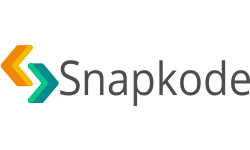Introduction to Golang
Golang is a fast, simple, and efficient programming language by Google, ideal for building scalable APIs, microservices, and cloud-native apps. It offers built-in concurrency, quick compilation, and is widely used for modern backend and DevOps tools.
Why Go (Golang)?
Go was created by Google in 2009 to solve problems developers faced with large-scale software systems. It was designed to be:
- Simple and readable – fewer features, no unnecessary complexity.
- Fast to compile – unlike C++ or Java, Go compiles quickly to native code.
- Efficient with concurrency – ideal for multicore processing and networked services.
- Built for modern infrastructure – cloud services, microservices, and APIs.
Go fills the gap between performance-heavy languages like C/C++ and developer-friendly ones like Python, making it a perfect choice for scalable, performant applications.
What Is Go Used For?
Go is a general-purpose programming language, but it shines in areas such as:
- Backend APIs and microservices – due to its fast runtime and low memory usage.
- Cloud-native applications – heavily used in Kubernetes, Docker, and other infrastructure tools.
- Command-line tools – fast execution and easy cross-compilation.
- Network servers and proxies – efficient I/O handling using goroutines.
- DevOps tooling – many CLI and server tools in the DevOps ecosystem are built in Go.
How Is Go Important?
Go is important because it hits a unique sweet spot:
- Performance of C with ease of Python – compiled to native code, yet easy to write and maintain.
- Built-in concurrency – goroutines make concurrent programming more manageable than threads.
- Static typing + simplicity – fewer runtime errors while keeping code easy to understand.
- Large ecosystem – strong community and standard library support for web, networking, and testing.
- Adoption by industry leaders – companies like Google, Uber, Dropbox, Netflix, and Cloudflare use Go in production.
Where Should You Use Go?
Use Go when:
- You’re building high-performance APIs or backend services.
- You need to scale your application across multiple CPU cores.
- You’re developing cloud-native software or tools like CLI apps.
- You want fast builds and deployments with minimal runtime overhead.
- You’re creating reliable infrastructure tools for DevOps and SRE teams.
Avoid Go if:
- You need advanced GUI support (Go lacks strong desktop GUI libraries).
- You rely heavily on OOP-style inheritance (Go prefers composition over inheritance).


